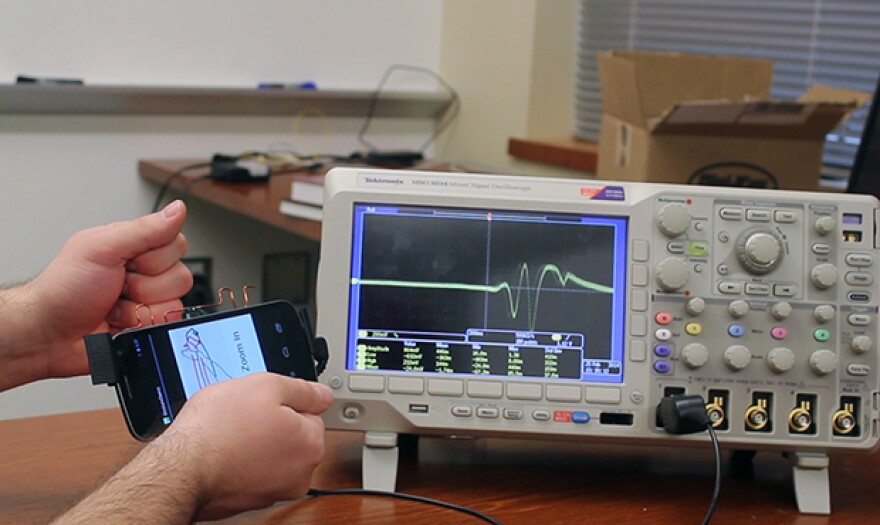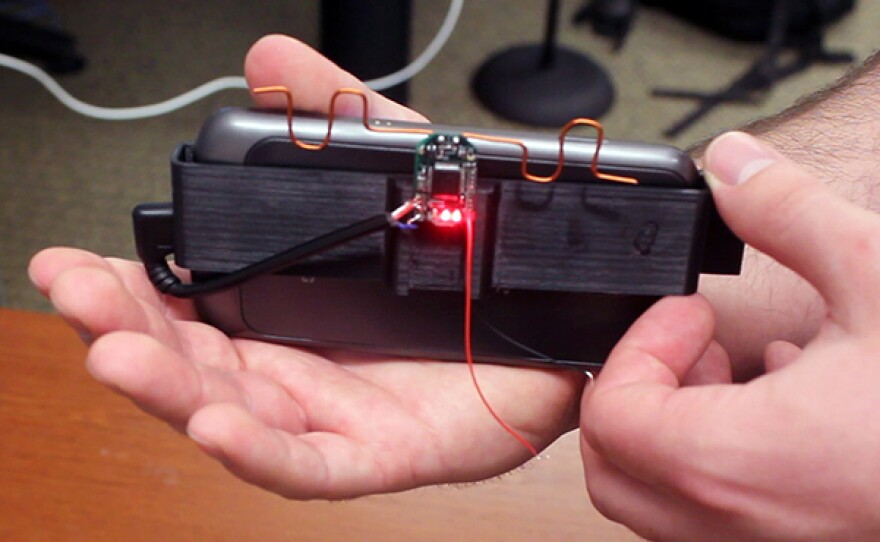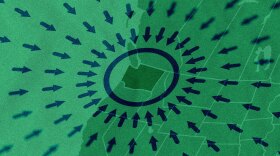A University of Washington research team has developed technology that could let people control devices with hand gestures. And the sensor doesn’t use battery power; it pulls electricity out of thin air.
Technology to read hand gestures already exists in devices like Microsoft’s Kinect. But most of it uses cameras or beams, which make it expensive and hungry for electricity.
AllSee technology, created by a UW engineering team, instead uses the waves already all around us, like TV signals and radio frequency waves. Moving your hand through those waves distorts them in recognizable ways, creating signatures that the device can translate.
Signatures In The Squiggly Lines
Graduate student Bryce Kellogg demonstrated with the prototype, which was connected to an oscilloscope that registers the change in the ambient waves with a squiggly line.

“As I move my arm towards it, we can see on the screen the squiggly wave, you know, we get a specific increasing pattern. And if I do a different gesture, like I pull my hand away, we get sort of the opposite squiggly pattern,” Kellogg said.
The device so far recognizes eight different gestures: pushes, pulls, finger flicks and combinations of them.
The gestures create a language that could be used to, say, control a robot or adjust your thermostat, even if the device isn’t in your line of sight.
Interfacing With An ‘Internet Of Things’
But the UW team has bigger ambitions. Imagine hundreds or thousands of devices in a home, all outfitted with these inexpensive, always-on little sensors.

“The big question that were trying to ask here is: Can we incorporate gesture recognition into every device?” said doctoral candidate VasmiTalla.
A barrier to making that vision is that current technology hogs electricity, meaning you’d have to power up those hundreds of devices.
But All-See sensors use just millionths of a watt. And they get it by harvesting electricity from those same TV or Wi-Fi waves already everywhere, making the power, essentially, free.
Below is a video demonstration provided by the University of Washington. Demonstrations that don't involve the prototype — namely those involving the smartphone in a pocket and a rolling cart — were performed without the use of the AllSee technology; the engineering team is still working to enable those functions.









